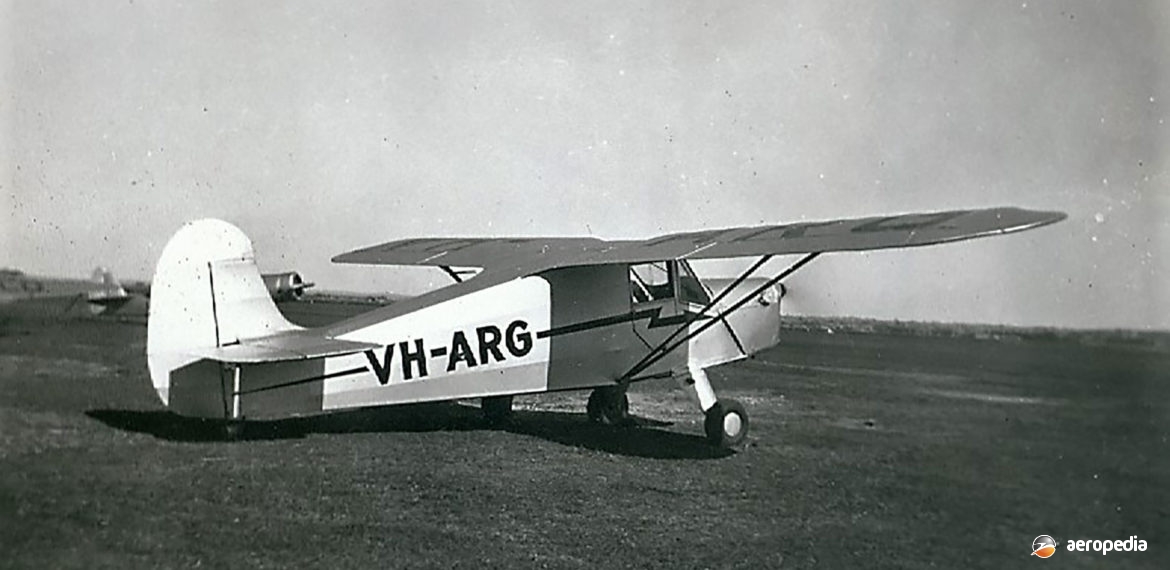Photograph:
Butler Bat VH-ARG (c/n 1) at Cootamundra, NSW (Frank Walters collection)
Country of origin:
Australia
Description:
Two-seat light aircraft
Power Plant:
One 60 kw (80 hp) Cirrus Minor four-cylinder in-line air-cooled engine
Specifications:
- Wingspan: 9.75 m (32 ft)
- Length: 6.7 m (22 ft)
- Height: 1.85 m (6 ft 10 in)
- Wing area: 13 m² (140 sq ft)
- Cruising speed: 161 km/h (100 mph)
- Initial rate of climb at sea level: 122 m/min (400 ft/min)
- Range: 1,207 km (750 miles)
- Empty weight: 509 kg (1,123 lb)
- Loaded weight: 771 kg (1,700 lb)
History:
The Bat was one of two aircraft designed and built by Mr Cecil Arthur Butler (1902-1980), a well known Australian aviator who, in October 1931, flew a Comper Swift (G-ABRE) from the United Kingdom to Australia. He was also the founder of Butler Airways, a well known airline which operated in the 1950s with Douglas DC-3s, Vickers Viscounts, and three Airspeed Ambassadors.
Butler served an apprenticeship at the Small Arms Factory at Lithgow, NSW, and later joined the Larkin Aircraft Company. He learned to fly and flew with Murray Valley Aerial Services. His first aircraft was the Butler ABA, a shoulder-wing all-metal monoplane fitted with a Cirrus Hermes II engine.
Butler’s next aircraft was the Bat. This was a high-wing monoplane seating two, powered by a 60 kw (80 hp) Cirrus Minor engine. Construction took place in the Butler Air Transport Company’s workshops at Cootamundra, NSW the first flight being made on 22 July 1937.
The fuselage was of all-metal construction in the cabin area but of timber behind. The aircraft was fabric covered. In April 1939 it was flown to Sydney, NSW to undergo inspection and certification. Butler noted in his book ‘Flying Start’ (published 1971) it was the first aircraft designed and built in Australia to be issued with a Certificate of Airworthiness by the Department of Civil Aviation, which had been formed in 1938.
Due to the Company’s war effort, the aircraft was stored in a hangar at Bankstown, NSW for the duration of the war. Subsequently it was purchased by Robert H ‘Bobby’ Gibbes (of Gibbes Sepik Airways) who flew it from Bankstown to various country centres as part of his stock and station work. He reported it to be rather underpowered. In December 1946 it was damaged in a gale at Finley, NSW. It was repaired and taken to New Guinea. Later it went to Messrs A C Cameron and D Scott of Tenterfield, NSW who traded as Camsco, and in November 1948 to East West Airlines. It was then dismantled and stored. Somehow it got to Oberon, NSW and was almost destroyed in a bushfire. The remains were located at Wyong, NSW in 1983 and were placed on storage at the Powerhouse Museum in Sydney.

